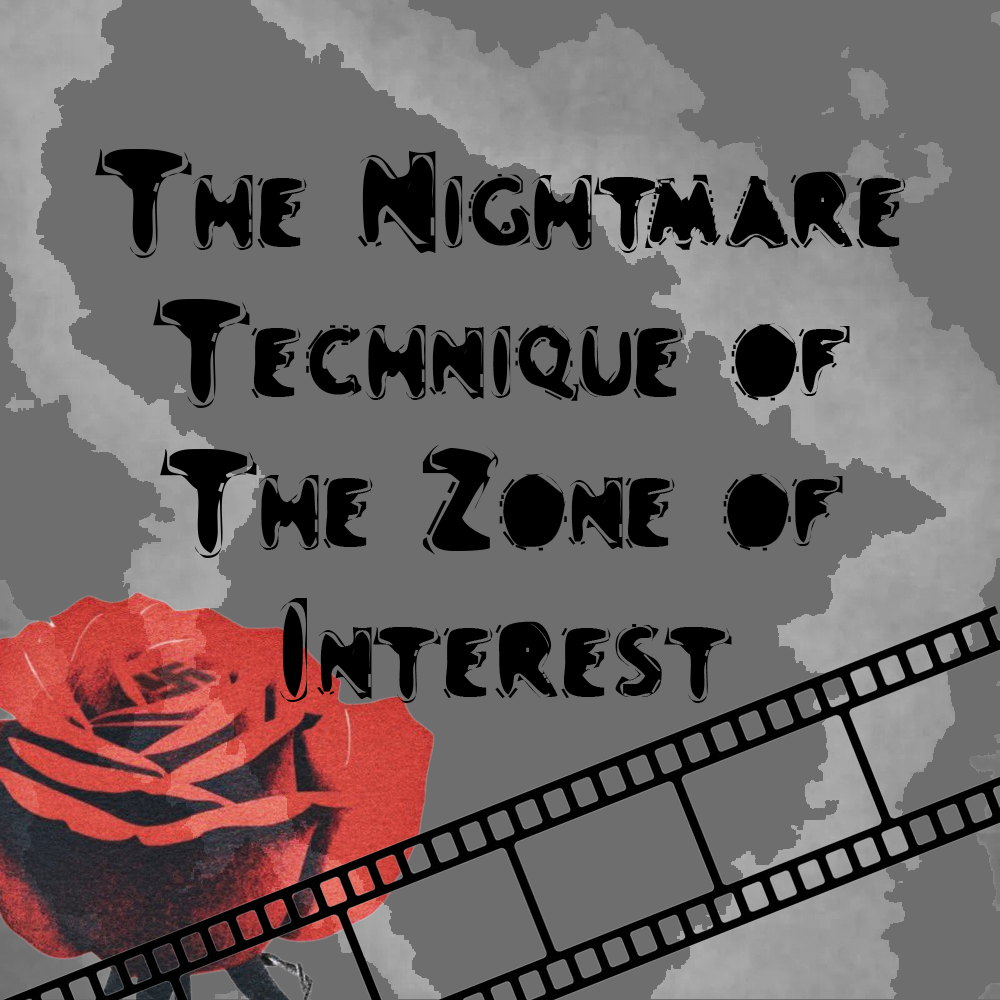Please visit response.fsu.edu for official FSU updates and resources.
The Nightmare Technique of The Zone of Interest

The 13th of October, 2023. The leads, sound designer, and director of the five-time Oscar-nominated film, The Zone of Interest, walk onto the stage of the Southbank cinema at the BFI London Film Festival, minutes after the credits are done rolling on the two-hour nightmare that the audience was subjected to. I was in that audience, and I was stunned. I was paralyzed in my seat after watching the most subtly effective drama film detailing the horrors of the holocaust I had ever seen, all done without a single drop of blood shown on screen. The sound of the film, paired with its precise and uncanny visuals, shook me. I felt a visceral sense of terror because I’m aware that just beyond the frame, but never beyond earshot, people are needlessly and systematically dying in sick, twisted daily slaughters. One of many things that have been ingrained in my memory in the short Q&A that followed was where lead actress Sandra Huller (nominated this year for her acting in Anatomy of a Fall) is asked about how she approached her character. The first part of her answer was a nuanced take on finding a way to honestly portray an evil of history without sympathizing or simplifying it, her character being the real wife of Auschwitz camp director Rudolph Hoss, but it's the second part I’m going to focus on here. That being the intricacies of the multi-camera system, as opposed to the much more conventional single camera.
This system, as well as the sound of the film, are the experimental highlights of the feature, but while the sound is definitely deserving of its own autopsy, according to the crew to the point that the sound design was referred to as “the second film,” as its narrative throughline and execution are entirely different than what's shown in the visuals, the style of shooting is its own beast to tackle.
When going over this film's approach, it's important to understand two things: the first is the film’s intent. The film is a depiction of the daily ordinary lives of a German household with only a concrete wall separating them from a Nazi concentration camp and them ignoring the pleas of the dying the entire time as they “lead a normal life.” The banality of evil has been thrown around a lot as the theme of this work, but I say it's not only that, but the aversion of reality for the sake of convenience to your situation is what allows these tragedies to happen and is doomed to keep happening. The second is a quote from Austrian filmmaker Michael Haneke in criticism of Steven Spielberg's holocaust film Schindler's List, “The idea of creating entertainment of this […] The mere idea of trying to draw and create suspense out of the question whether out of the shower head, gas is going to come or water, to me is unspeakable.” Haneke’s perspective is that this tragedy could not tastefully be explored in any way that dramatizes the event. A movie using cinematic tropes or straightforward narrative conventions does not do history justice. It’s clear the entire film subscribes to this notion, which is why its approach is so starkly “anti-narrative.” There is a story, but it's sparse and basic, lingering on irrelevant detail and mundanity- because what informs the horror is the context that just beyond what the audience sees is something they could only ever imagine, no matter how many times we may see it second hand through media.
The film rejects the audience being in any way satisfied by the visuals. The camera barely moves, and when it does, it’s a robotic slide. The color is muted, and the framing is not unappealing but very flat. It all gives the intentional impression of not peering into the lives of this family, but existing in their space, living with them. This is evident in the multi-camera approach, used most commonly by sitcoms such as Friends or Good Luck Charlie. The house and its yards are set up with cameras on a set and still frame, and every cut is a direct and fluid continuation of the last cut of the scene. Close-ups are a luxury. With very few intentionally Lynchian sequences as exceptions to the rules of dread, the film sets for itself, the camera more, than most movies, is a conduit of direct information. “Hoss angrily follows her servant down the hallway,” and it is framed in a long shot that only lasts from the beginning of when Hoss enters and ends when she leaves to go to the next room, with no room to breathe on either side. There is no room to interpret or draw meaning or implications from her actions. We get used to a rhythm; we get used to the screams, the ashes, and the gunshots in the background because all we’re concerned with visually are the relatively trivial daily lives of the Hoss family. However, we still find it dreadful the entire time, even if we grow accustomed to the thesis of brutality and neglect the film poses.
All it is is that we are forced to experience the tragedies the way that true Nazi families did, an inconvenience that doesn’t concern the protected German population. That’s the horror The Zone of Interest achieves with its unconventional filming technique.
I’ll end this piece by going back to that Q&A. To share a quote that best encapsulates the point of the film, coming straight from director Johnathon Glazer, “I think the central principle was to show our similarities to the perpetrators rather than our similarities to the victims. And the discomfort and the warning of that”
Writer: Tony Molina
Artist: Solymar Estrella



